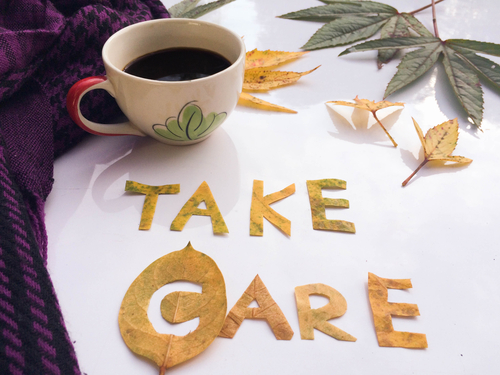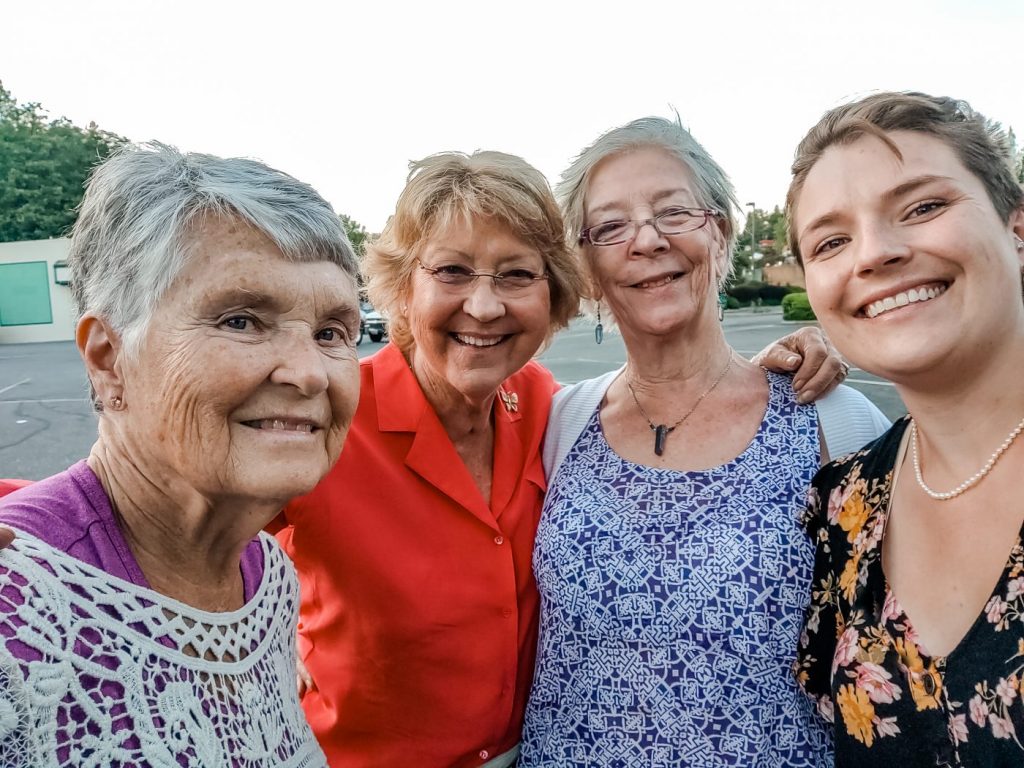Taking Care of Yourself and Your Loved One

I have spent a lot of time writing about self-care and mental health as a caregiver. Even if the term “self-care” sounds silly to you, I recommend dedicating time every day to your mental health. If for no other reason than to help prevent caregiver burnout.
Another reason to incorporate self-care into your routine, especially if your loved one is hospitalized, is so that you also have enough energy to support their mental health.
As someone who has never had a chronic illness, I can’t know what kind of strain it puts on your mind. However, I have seen chronic and terminal illness up close in several family members in recent years. I also have had a severe injury that turned my world upside down and took away my independence and mobility. I can empathize with the mental strain of an unwell, uncooperative body.
It’s no surprise that failing lungs come with a huge emotional cost. I watched my mom go through loss after loss when she was sick with idiopathic pulmonary fibrosis. Her independence, her mobility, and nearly everything “normal” about her life were taken away.
When she was hospitalized in January, it was a shock. We had been in Hawaii a month earlier, snorkeling and walking in the rainforest. We had just started planning my wedding reception. The drastic change in her health didn’t seem possible.
Amid fighting for every breath and being at the will of more than a dozen doctors, my mom finally had to rumble with the potential outcomes of this disease. We all did. But she alone was battling to stay alive, which meant the rest of us had to help save her in any way we could.
Self-care did not eradicate my stress or negative feelings. But it did allow me to have an emotional well from which I could pull strength and love to give to my mom. Perhaps my ways of supporting my loved one will spark ideas if you are supporting someone with a chronic illness.
Physical touch
This was especially important when my mom was in the ICU and was being touched by many people in invasive or painful ways.
I gave her foot rubs, which helped her relax and relieved the swelling in her feet. They became a kind of nightly ritual. We would talk — I read her lips since she had a trach — or enjoy the quiet of a rare moment without an alarm going off.
I gave her a manicure and pedicure. My mom’s nails were another reminder of her failing lungs. She had clubbing, and the nail beds looked too pale without enough oxygen. I bought the brightest, most obnoxious shade of pink I could find. It was called “punk rock pink.” I wanted something that would brighten up the room. The neon shade was a hit with the nurses!
Set goals
Some of our goals were things she could achieve in the hospital, such as:
- Meeting the transplant list requirements.
- Walking one full length of the ICU. Then two. Then three.
- Using a Passy-Muir valve.
We also talked about the little things we looked forward to doing after her transplant. Talking as if the transplant was a certainty was both dangerous and necessary. We needed to believe that she would have a successful transplant. Those things gave us a future to fight for in harder moments. “I’m going to get out and drink a lemonade!” was a little one. A bigger goal was to go wedding dress shopping.
Games and activities
There is a lot you can do in the hospital to pass the time. When my mom had the energy, we played scrabble, colored pages from a flower coloring book, or she read. My aunt Shari brought collage supplies and they made cards.
Aside from being fun, art projects and coloring pages can be used to decorate the room. Artwork was taped almost floor to ceiling in my mom’s room by the time she had her transplant.
Doing things with my mom kept her spirits up and her mind active. She maintained a positive attitude throughout her three months in the ICU and one month in a cardiac unit after transplant.
And there are many sweet memories mixed in with the painful ones.
***
Note: Pulmonary Fibrosis News is strictly a news and information website about the disease. It does not provide medical advice, diagnosis, or treatment. This content is not intended to be a substitute for professional medical advice, diagnosis, or treatment. Always seek the advice of your physician or other qualified health provider with any questions you may have regarding a medical condition. Never disregard professional medical advice or delay in seeking it because of something you have read on this website. The opinions expressed in this column are not those of Pulmonary Fibrosis News or its parent company, Bionews Services, and are intended to spark discussion about issues pertaining to pulmonary fibrosis.









carmela
Hi Christie,
Happy to see that you helped mom thru surgery with inventive and creative activities. Quite an accomplishment and enjoyed seeing the picture of you, mom, and aunts shopping for wedding dress. Congratulations on your marriage and the powerful success you had with mom. Your telling your story definitely gives the PF community and their caregivers strength, understanding, and hope to find physical and emotional peace.
Thank you.
Sincerely, Carmela
Christie Patient
Thank you Carmela! There are many success stories out there and plenty of hope to be had for the pf community
Susan Delves
Thanks for the information, I will pass on to my beautiful daughters who are trying so hard to help. I was also released for my nursing position after 30 years my ipf plus combined with lung cancer makes it worse
Christie Patient
Hi Susan, I'm so sorry to hear about your dual illness situation. I'm sure your daughters are trying their best and I hope this can be of some help to them, and to you. My number one piece of advice is to just love each other as hard as possible every day. Start with that and the rest will come. I wish you all the best.